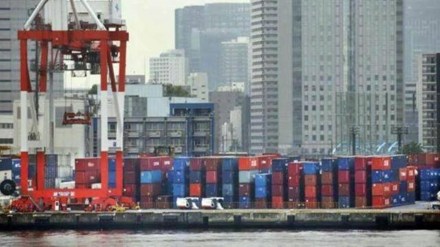There is a significant uptick in bilateral trade since India’s comprehensive economic partnership agreement (CEPA) with the United Arab Emirates came into force on May 1, 2022. This aims to step up bilateral trade to $115 billion within five years, of which $15 billion is in services export, up from $84.5 billion in FY 23 and $72.9 billion in FY22.The UAE is India’s third largest trading partner after the US and China. The Emirates is also India’s second largest export destination, with outbound shipments worth $ 31.3 billion or 7% of total exports. With India’s imports of $53.2 billion driven largely by oil, the balance favours the UAE at $21.9 billion. The bulk of trade between the two nations is of petroleum and gems and jewellery. But a big surprise in the trade numbers is that the UAE is now a major supplier of aircraft parts to India. Reflecting a deepening strategic partnership between the two nations, the CEPA is both deep and ambitious as India has obtained duty elimination on over 80% of its tariff lines corresponding to 90% of its labour-intensive exports of goods to the UAE. In services, broader and deeper commitments have been made across all sectors and modes of supply. The utilisation of the CEPA has also been steadily increasing as the number of preferential certificates of origin—given for goods that are subject to preferential tariff treatment—rose from 415 last May to 8,449 in March 2023.
Doubtless, a key driver in the economic partnership is the 3.5 million-strong Indian diaspora in the UAE, which has strong business links with the home country. The profile of the community has also changed away from blue collar workers who built the infrastructure. Now, 35% are professionally qualified, businessmen, and other white collar non-professionals. Total cumulative investments in the UAE by non-resident Indians are $55 billion, with investments by the 70 richest Indians based in the UAE valued at over $8-9 billion. More than 30% of the start-up community in Dubai is represented by Indians according to a KPMG-IBPC report. Affluent Indians are also re-locating in Dubai attracted by Golden Visas, which provide a 10-year residence permit.
Also read: Karnataka’s low social spending
Businessmen from India are also setting up shop in Dubai. Around 11,000 Indian-ownedcompanies were added to the records of a local business chamber last year, taking the total to 83,000. Clearly, there is critical mass to drive the growing engagement between India and the UAE. Bilateral trade is bound to grow manifold with two-way investment flows. For India, the sovereign wealth funds of the UAE are a crucial source of capital for the nation’s infrastructure.
Also read: Subvention schemes need better targeting
The CEPA’s larger significance is that it serves as a template for a free trade agreement with the Gulf Cooperation Council whose members include Saudi Arabia, Kuwait, Oman, Qatar and Bahrain. India thus will have larger access to West Asia and Africa as UAE has no customs barriers with GCC members.To be sure, India sought to have a framework agreement with the GCC way back in 2004. There were two rounds of discussions in 2006 and 2008 but the talks did not fructify. But there is bound to be renewed impetus to clinch an agreement with the GCC. In turn, the UAE looks at India as a gateway to Asia. A year on, the CEPA thus is a win-win deal for both nations.
